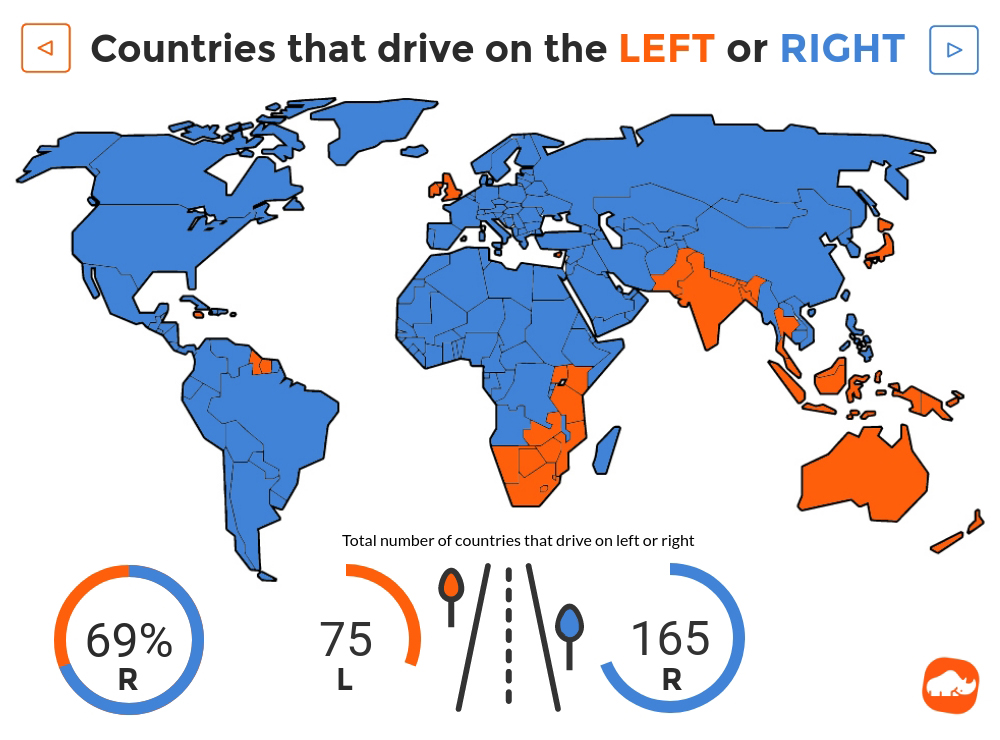Why Different Countries Drive on Opposite Sides of the Road
Driving habits can vary considerably between countries due to historical and practical reasons. The side of the road people drive on is one example of a significant difference. Here is an overview of why some countries employ right-hand driving while others favor left-hand driving.
Ergonomics and Safety Considerations
Placing the steering wheel on the side closest to the centerline of the road helps drivers see oncoming traffic more easily when passing or overtaking other vehicles. This configuration allows a better view of the road ahead and spotting any hazards. Countries that drive on the left side of the road, such as the UK, Japan, and Australia, benefit from drivers sitting on the right side for improved visibility and safety while overtaking. Conversely, countries that drive on the right side, like the US, India, and most European nations, gain the same vision and safety advantages with the steering wheel on the left. Historical conventions sometimes override ergonomic factors, but safety tends to be the primary motivation in any transition between right and left-hand traffic systems.

Origins in History
The earliest reasons for different right or left-hand traffic conventions stem from the prevailing side that horse-drawn carriages and other vehicles passed each other on narrow roads. In countries like the UK and its former colonies, passing on the left probably arose from the historical rule that mounted travelers gave the side of the road toward oncoming traffic. Countries that were formerly part of the Roman Empire, including much of Europe, adopted right-hand traffic from the Roman custom of keeping swords hands free to salute as they met other individuals on the roads. German states were also influential in spreading right-hand conventions to other parts of Europe and beyond.
Population Traits
Placing the steering wheel and transmission lever on the same side as the dominant hand of most citizens provides certain advantages. India shifted to right-hand driving from left-hand decades ago partly due to nearly 80% of Indians being right-handed. This makes tasks like steering and shifting gears marginally easier with one hand. However, handedness alone does not determine a country’s driving side, as left-driving places like the UK and Australia have predominantly right-handed populations too. Broader historical, economic, and practical factors usually carry more weight than any benefits to lefties or righties.
Regional Harmonization
Many transitions between sides happened to unify regions and facilitate cross-border road travel. For example, Sweden converted from left to right in 1967 along with Denmark and Norway to standardize within the Nordic economic area. But seamless border-crossing remains impossible where adjacent nations drive on opposite sides, requiring direction changes or lengthy detours. Such barriers have motivated many countries near borders, like India, to switch driving sides for trade and transportation convenience. However, large nations that already established extensive infrastructure like the US and China have little incentive currently to alter the status quo.
Tradition Versus Change
Switching sides involves enormous costs for infrastructure changes, replacement of all road signs, public education campaigns, and longer adjustment periods. Thus, established conventions tend to persist even if alternatives offer practical benefits. Left-hand driving survives in former British territories due to strong traditions more than any single rationale.
Countries serious about change usually launch pilot programs first followed by law changes many decades later once new generations adapt. But transitions remain rare, and diverse views worldwide mean the split between left and right-hand sides will likely continue well into the future. Tradition and inertia usually outweigh reasons for aligning standards globally in road transportation.
